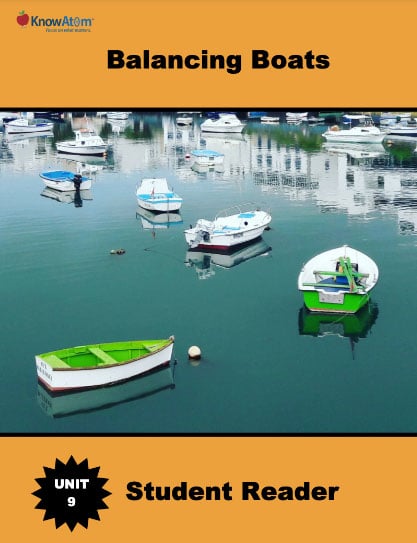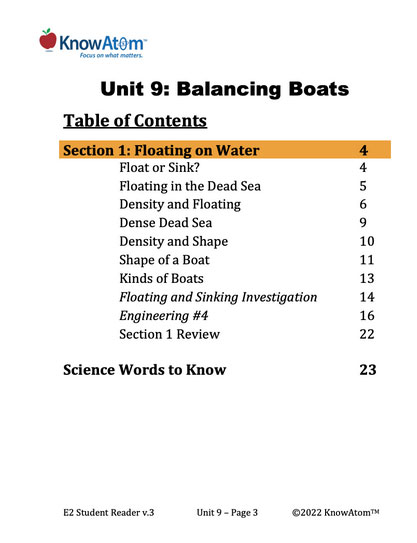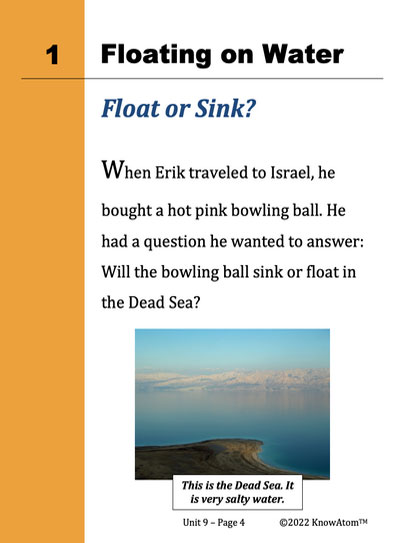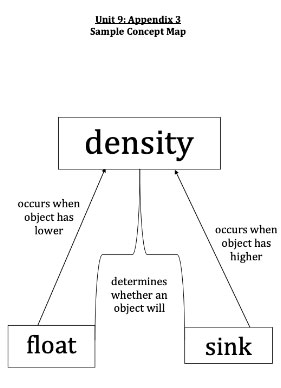Density and Shape
The shape of an object also affects how well it floats. Boats are a good example of this. Boats carry people and cargo on the water. There are many kinds of boats.
Some boats are large. Cruise ships carry thousands of people. Some boats are small. A canoe carries one or two people.
Shape of a Boat
The body of the boat is called the hull. The hull includes the part of the boat that goes underwater. It also includes the part in the middle that is hollowed out. This is where people and cargo go.
There are different hull shapes. One shape is a flat-bottom hull. Another shape is a round-bottom hull.
Even though the hull can be different shapes, all boats have a large surface that touches the water
Gravity pulls down on objects in the water. This is the weight of an object. It pushes some of the water out of the way. In response, the water pushes back.
The more of the boat that touches the water, the more water it pushes out of the way and the more the water pushes back. This helps the boat float.








